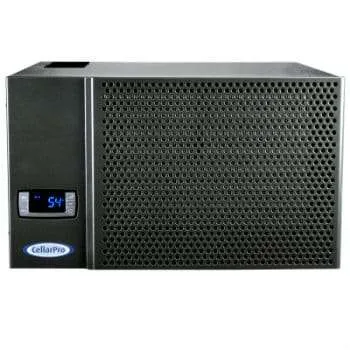Red wine is a timeless indulgence, cherished for its complex flavors and ability to evolve over time. Whether you’re a casual enthusiast or a serious collector, one question often arises: How long will red wine last in storage? The answer depends on several factors, including the type of wine, its quality, and—most importantly—how it’s stored. When red wine is stored using wine cooling units in insulated wine rooms, its lifespan can be significantly extended. Let’s dive into the details.
The Lifespan of Red Wine: A General Overview
Red wine, unlike white wine, is often aged to enhance its flavor profile. However, not all red wines are created equal when it comes to aging potential. Here’s a quick breakdown:
Everyday Red Wines (e.g., table wines, young Cabernets): These are best consumed within 1–3 years of purchase. They lack the tannins and structure needed for long-term aging.
Mid-Range Red Wines (e.g., Merlot, Shiraz): These can last 3–7 years if stored properly.
Premium Red Wines (e.g., Bordeaux, Barolo, Napa Cabernet): High-quality reds with robust tannins and acidity can age gracefully for 10–20 years or even longer under ideal conditions.
While these timelines provide a general guideline, the key to maximizing a red wine’s lifespan lies in its storage environment.
The Importance of Proper Storage
Red wine is a delicate beverage that reacts to its surroundings. Exposure to heat, light, humidity fluctuations, and vibrations can accelerate its deterioration. This is where wine cooling units and insulated wine rooms come into play.
1. Temperature Control
The ideal storage temperature for red wine is between 55°F and 65°F (12°C–18°C). Temperatures outside this range can cause the wine to age prematurely or develop off-flavors. Wine cooling units ensure a consistent temperature, preventing the thermal expansion and contraction that can damage the cork and allow oxygen to seep in.
2. Humidity Levels
A relative humidity level of 50–70% is ideal for wine storage. Insulated wine rooms help maintain this balance, preventing corks from drying out and minimizing the risk of oxidation. Too much humidity, on the other hand, can lead to mold growth on labels and capsules.
3. Protection from Light and Vibration
Ultraviolet (UV) light can degrade wine, causing it to lose its vibrant color and flavor. Insulated wine rooms, often equipped with UV-resistant glass or solid doors, shield your collection from harmful light. Additionally, wine cooling units are designed to operate quietly, reducing vibrations that can disturb the sediment in aging wines.
How Long Can Red Wine Last in Optimal Storage?
When red wine is stored in a climate-controlled environment with wine cooling units and insulated wine rooms, its aging potential is maximized. Here’s what you can expect:
Everyday Reds: These wines will maintain their quality for up to 3 years, though they won’t improve significantly with age.
Mid-Range Reds: Proper storage can extend their lifespan to 5–7 years, allowing their flavors to mature and develop.
Premium Reds: High-quality reds stored in ideal conditions can age gracefully for decades. For example, a well-stored Bordeaux or Barolo can reach its peak after 15–20 years, with some exceptional vintages lasting even longer.
It’s worth noting that even the best storage conditions won’t turn an average wine into a masterpiece. The wine’s inherent quality and aging potential are the ultimate determinants of its longevity.
Tips for Maximizing Red Wine Storage
Invest in a Wine Cooling Unit: If you’re serious about wine storage, a dedicated cooling unit is a must. Look for models with dual-zone cooling if you plan to store both red and white wines.
Choose an Insulated Wine Room: Insulation helps maintain stable temperature and humidity levels, protecting your collection from external fluctuations.
Store Bottles Horizontally: This keeps the cork moist, ensuring a tight seal and preventing oxidation.
Minimize Movement: Avoid frequent handling or moving bottles, as vibrations can disrupt the aging process.
Monitor Conditions: Use a hygrometer and thermometer to regularly check humidity and temperature levels.
Conclusion
The lifespan of red wine in storage depends largely on how it’s cared for. By using wine cooling units and insulated wine rooms, you can create an environment that preserves and enhances your collection. Everyday reds will stay fresh, mid-range wines will develop complexity, and premium reds will reach their full potential over decades.
Whether you’re storing a bottle for a special occasion or building a cellar for future enjoyment, proper storage ensures that every sip is as memorable as the last. Cheers to preserving the magic of red wine! 🍷






